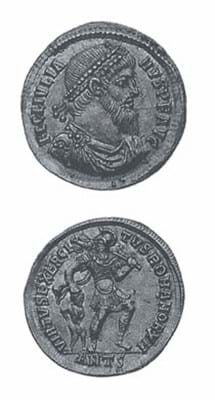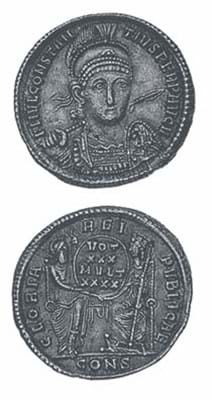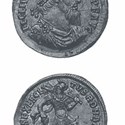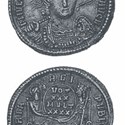There was no particular theme to the sale but there was a quantity of mostly low-value lots which it would be foolish not to view.
Of late a good deal of late Roman gold coins have come on to the market and they seem to appear in most sales. This indicates that perhaps there has been a large hoard. Late Roman gold coins tend to be found thus. For this reason it is as well to report on their current value at regular intervals.
If there has been a large hoard or indeed more than one, these coins should, for the time being at least, be inexpensive for what they are.
For sure these coins are historic documents of importance and they have traversed the centuries pretty much unscathed. They are also aesthetically pleasing to boot.
As manifestation of this, it is worth noting the gold solidus of Constantius II (337-361AD) struck at Constantinople, one of several mints. The reverse is decorated by the allegorical figures of Rome and Constantinople signifying the translation of the seat of Roman Imperial power to the East. An historic document indeed. Estimated at £300-400, it fell at an inexpensive at £280.
The Emperor Julian (360-363AD), who was called the Apostate because of his return to paganism, was represented by an equally attractive solidus struck at Antioch. Note his resplendent beard; there are independent contemporary records that it was matted and very unattractive.
In general terms Christian emperors shaved, and Julian's beard was a propaganda statement of a return to the "good old days" of paganism. The estimate was £400-600. It made £520.
These two coins give us a hard document of the advent of Christianity in the late Roman world. As a duo they are surely not expensive even if you don't collect coins.
The 948-lot sale had a much better than usual sold rate by lot (91.67 per cent) and took a useful £228,440.
Pagan appeal at Bonhams
OUT of the ashes of Glendinings, Bonhams (17.5/10% buyer’s premium) have established a series of general sales. The last occurred on April 5. John Millensted, who has worked at Glendinings for some years, has been promoted to head of the numismatic department.








